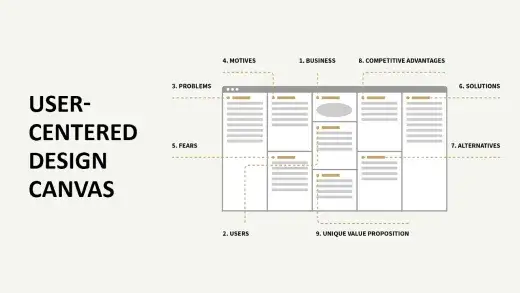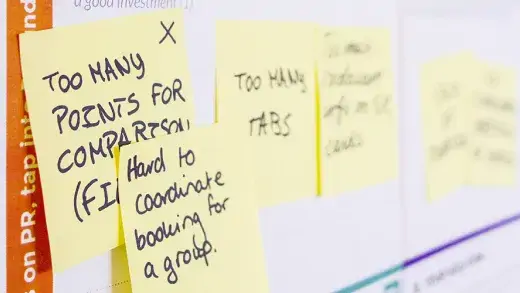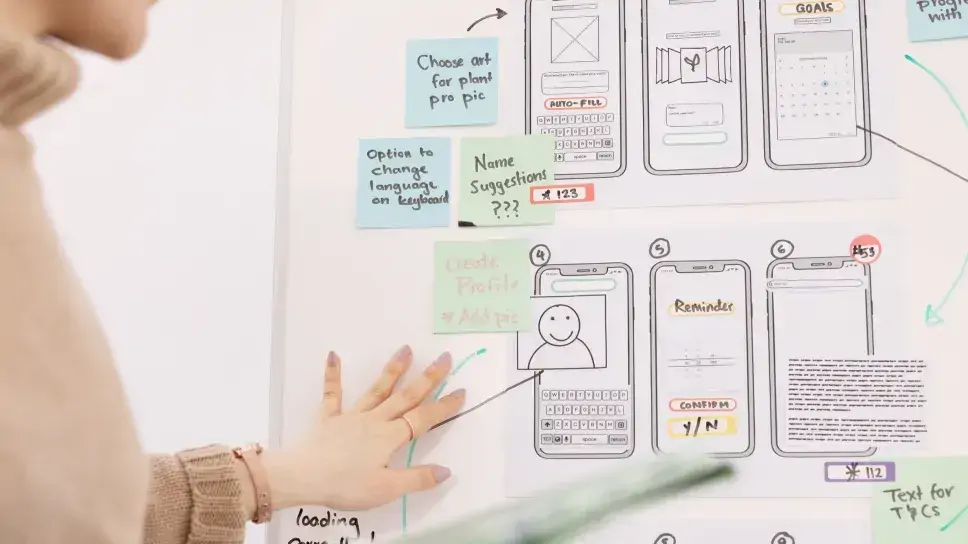Can AI Replace UX Designers? A Reality Check

With the rapid and almost dizzying growth of AI, it seems like this technology has made its way into nearly every industry. If the presence of AI can clearly define its role in certain fields like generating content for marketers, creating videos and images for graphic designers, or building UI screens for UI designers, and so on and so forth… So how exactly is AI in UX design being positioned within the field?
While many worry that AI might eventually replace humans, the pressing question remains: Can AI truly replace UX designers, or is it simply reshaping the way they work?
Before we get into these two questions, I bet you already know what UX and AI are, right? Still, let’s quickly revisit the basics to make sure we’re on the same page.
- User Experience (UX) refers to creating products that not only fulfill the user's needs effortlessly but also offer simplicity and elegance. A true UX design transcends basic features or user demands, it blends engineering, marketing, design, and usability to create seamless, delightful experiences.
- On the other hand, Artificial Intelligence (AI) is the ability of machines to perform cognitive functions we typically associate with human thinking such as learning, problem-solving, and decision-making.
BFF or Backfire?
What AI Really Means for UX Designers?
I’ve heard a lot of buzz claiming that AI can boost individual productivity and enhance work quality. But... is this hype true when it comes to UX designers?
Well, according to Jakob Nielsen’s analysis of AI’s impact on productivity and work quality among top consultants at Boston Consulting Group (BCG), the intersection between AI and creative fields like UX design is rapidly evolving. His research findings and data clearly highlight how AI is reshaping these disciplines, driving noticeable improvements in both efficiency and and output quality, ultimately AI boosting UX productivity.
From his research and analysis, Jakob Nielsen presented several key data points along with some limitations of AI,
as follows:
- On productivity and work quality: AI boosted consultants' productivity by 33% when used for real world tasks, and it also improved the quality of output by around 40% with AI assistance.
- On skill development: The use of AI had a significant impact on enhancing workers' skills. In the study, he divided participants into two groups and found that skill improvement varied: the high skill group showed about a 17% improvement, while the low skill group experienced up to a 40% improvement.
This demonstrates a powerful insight: AI doesn't just automate tasks, it elevates people. In UX design, that means helping designers focus more on strategic thinking, problem-solving, and systems design, the heart of impactful
user experiences.
In practical terms, AI tools for UX designers offer several important advantages:
- Increased Productivity: Accelerate repetitive or time consuming tasks.
- Improved Output Quality: Sharpen content, visuals, and structure.
- Skills Enhancement: Bridge experience gaps and support junior designers.
It doesn’t stop there, his research also revealed that in certain complex tasks, such as analyzing qualitative and quantitative data, AI sometimes produced incorrect solutions, and AI tools in UX design users actually had a lower accuracy rate compared to the group that didn’t use AI.
Wait... am I contradicting myself by presenting two opposing arguments about AI? 😅 Be patient and read till the end to truly understand where I’m going with this!
How AI Supports UX Designers ?
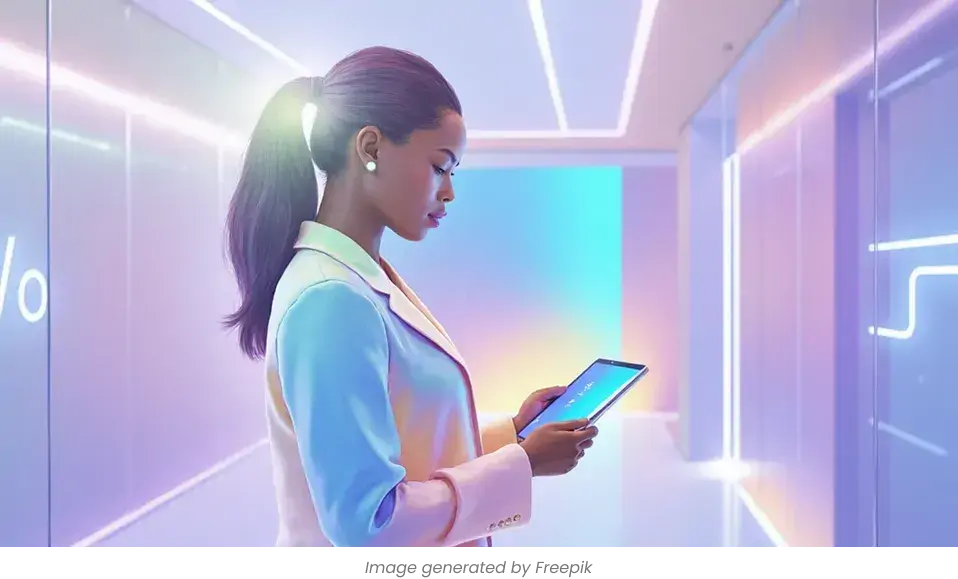
We have understood what User Experience (UX) and Artificial Intelligence (AI) are, as well as the significant impact AI in UX design has through part 1. Now, to clearly understand how AI can support this field, and how, as a UX designer, you can apply using AI in UX design to make your work more effective.
Let’s dive deeper.
1. Content Editor
Let me tell you how AI became my secret weapon when it comes to writing. Whether it’s crafting those tiny UI microcopy lines or whipping up social media posts, AI jumps in to help me find the perfect tone, suggest fresh ways to say things, and even draft user stories from scratch. Honestly, for UX teams like mine who don’t always have a professional writer on hand, this feels like having an extra teammate that saves hours and boosts the quality of our content without breaking a sweat.
2. Research Assistant
I have to admit, AI has been a game changer when it comes to research, especially desk research. It helps me pull in data from everywhere, break down complex articles, and spot patterns I might’ve completely missed on my own. Suddenly, tasks that used to take hours now only take minutes. It’s like having a supercharged research partner who never gets tired.
3. Design Assistant
Did you use to spend countless hours building user personas, sketching wireframes, or doing similar tasks?
I sure did. But once I started using AI in UX design as my design assistant, everything changed. Now, I can generate key deliverables in a flash, whether it’s a fresh user journey map or a detailed wireframe. An AI UX design generator or AI UX design tool even helps me tweak and polish existing designs with smart, contextual suggestions. It’s like having a tireless creative partner who keeps ideas flowing and helps me iterate at lightning speed.
4. Predictive Analysis
I believe that anyone working in product understands the importance of user data. When you have access to this data, being able to analyze it and predict future behavior trends of your target users becomes a major advantage. It can significantly boost conversion rates, guide product direction, and support growth.
That’s where AI-driven predictive analysis comes into play. It helps us better understand user behavior by analyzing historical analytics data. By identifying shifting trends and evolving customer needs over time, it enables us to make smarter design decisions. Ultimately, predictive analysis empowers teams to create products and UX designs that truly align with what users want.
5. A/B Testing
To improve user experience and optimize key business metrics like revenue, engagement, or conversion rates. I believe we all understand one thing: relying solely on gut feelings or personal opinions is like gambling with your own product. That’s why product teams perform A/B testing to collect real, actionable data that can guide smarter design and marketing decisions. This is where AI becomes a game-changer. It supports a more systematic and scalable approach to A/B testing by processing massive amounts of data in real time.
With AI, UX designers can shorten the time spent building strategies and user scenarios, while gaining a clearer understanding of user interaction levels and even predicting future behavior trends. By providing a deeper understanding of metrics, AI empowers UX designers to make more informed, data-driven design decisions.
6. User-Journey Optimization
By tapping into real user data, I’ve found that AI can help optimize future user journeys. It uncovers pain points, those spots where users tend to drop off or get stuck, and gives me the insights I need to smooth things out. That way, users can enjoy a seamless, frustration-free experience from start to finish.
So, out of all the tasks I just mentioned, how many has AI already helped you with? And more importantly how have you been using AI in UX design in your own workflow?
Now, here comes the million-dollar question that’s probably crossed your mind more than once: Should we be worried that AI might one day replace us?
Let’s dive into that in the next section.
Can AI Replace UX Designers ?
Through the previous sections, we’ve started to see the growing role of AI in UX design. It’s clear that UX designers can boost productivity, improve output quality, and even enhance their skills by leveraging AI.
However, as I mentioned back in part 1, AI isn’t without its challenges and limitations.
1. Designing with AI Without Losing Yourself
I know that the use of AI in UX/UI design brings many benefits but like anything, it’s a double edged sword. The more I use it, the more I start to see not just the benefits, but also the hidden pitfalls that come with it.
- The human touch matters: There was a time when I got a bit too comfortable with AI. But deep down, I always had this uneasy feeling was I becoming too dependent on it? Sometimes, I’d look at my work and think: it feels… robotic. Predictable. Like my creative instincts were quietly slipping away. Some senior designers I really admire once told me, “If I didn’t solve the design problem myself, I can’t really call it mine.” And honestly, I couldn’t agree more. There’s a certain pride in crafting something from scratch. But when AI steps in too much, that sense of authorship starts to fade. That’s why I’ve made a clear choice: AI is my tool, not my crutch. I still want my designs to feel human, and unmistakably mine.
- Bias and fairness: One time, I used an AI UX design tool to help define user personas for a project, and the suggestions it gave were oddly stereotypical. That’s when it hit me: AI is only as good as the data it’s trained on. If that data carries bias, my design might too. It reminded me that I can’t blindly trust the outputs. I have to stay critical and responsible.
- Data security: I also find myself genuinely concerned about data privacy. We all know that AI relies on massive amounts of user data to learn. But I can’t help but wonder are those data really being protected well enough? Is AI using them ethically? These questions stay with me. They remind me that as much as we love the speed and convenience AI brings, it should never come at the expense of user trust.
Despite all this, I’m not anti-AI. In fact, I still use it every day. But now, I see it for what it is: a tool, not a replacement. The real impact comes when I pair AI’s speed with my own human insight. That’s when the designs truly come to life.
2. So, could AI Replace Human Designers ?
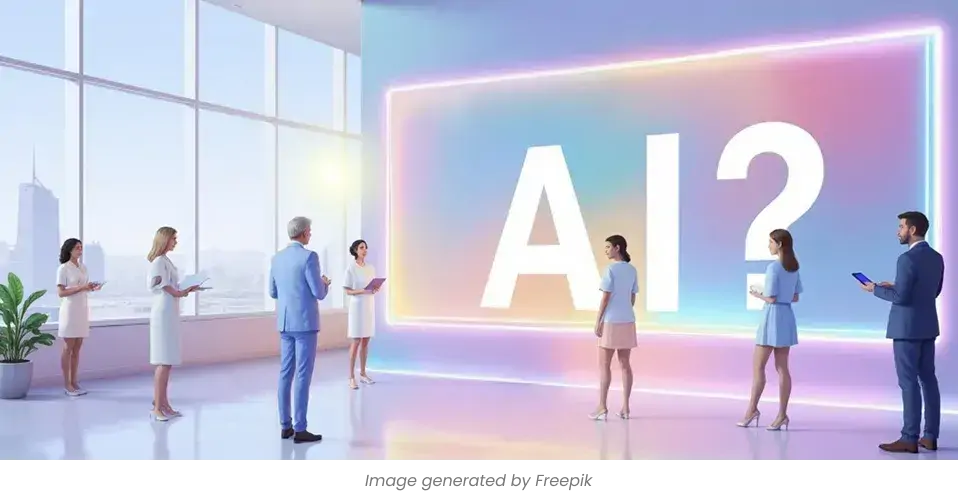
At this point, I believe there’s no longer any doubt about the role of AI in UX design across most fields, especially in UX design. AI has clearly demonstrated its power and potential to support our work in remarkable ways.
However, for many reasons, AI still cannot fully replace the need for human intervention in the design process. There are layers of empathy, creativity, and ethical decision-making that only humans can bring to the table.
- Problem-solving abilities: I agree that an AI UX design generator can be incredibly useful when it comes to generating templates or sparking design ideas. It speeds things up and gives me a head start. But when it comes to solving complex design problems, the kind that require logical thinking, systems understanding, and deep user empathy, AI still falls short. That’s where human expertise comes in. It takes a real UX designer to navigate the messy realities, make the tough trade-offs, and craft solutions that actually work in real life, not just on paper.
- Creativity and human intuition: Do you agree that AI is just a tool? It’s hard for any tool to truly empathize with the complex emotions and thoughts of humans. AI lacks the ability to understand feelings and intentions behind user behaviors. More importantly, AI tools in UX design fall short when it comes to human creativity and empathy, two crucial elements for designing meaningful and effective user experiences. They can generate templates or concepts, but they don’t feel what users feel. That’s why we still need human developers and UX designers who deeply understand the target audience’s needs and can craft thoughtful solutions that truly resonate.
- Communication and collaboration skills: Design isn’t just about sitting behind a screen clicking away. As UX designers, we constantly collaborate with cross-functional teams, product managers, marketers, developers, as well as clients and users from various domains. This teamwork ensures we create the best possible product. Because of this, strong communication skills are a must. We need to clearly present our design ideas, explain our decisions, and sometimes negotiate with different stakeholders to find the right balance.
AI tools? They simply don’t have that human touch. They can’t understand context, read the room, or navigate complex conversations. That’s why communication and collaboration remain uniquely human strengths in the design process.
Conclusion
I’m fully convinced by the clear benefits AI in UX design brings: AI boosting UX productivity, enhancing skills, and providing powerful AI tools for UX designers for research and creativity. Yet, AI also has its own limits and challenges in our field.
True UX design requires empathy, intuition, complex problem-solving, and seamless collaboration qualities that only humans possess. AI should be seen as a tool to amplify our strengths, not a crutch that dulls our creativity. In the end, the best designs come from the harmony between smart AI assistance and human insight, creating unique and deeply meaningful experiences.

